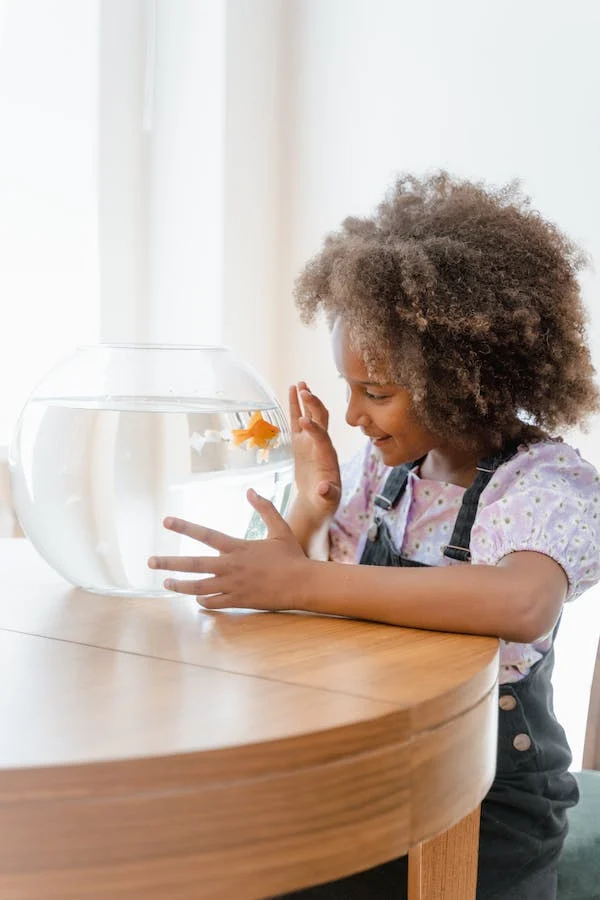Training fish may seem like an unusual concept, but it’s actually possible to train fish to perform certain behaviors and to respond to specific cues. This can be a fun and interesting way to interact with your fish and to bond with them.
The first step in training fish is to choose the right species. Not all fish are suitable for training, but species such as bettas, goldfish, and koi are generally good candidates. These fish have a longer attention span and are able to learn and remember certain behaviors.
Once you have chosen the right species of fish, it’s important to create a comfortable and stimulating environment for them. This includes providing a large enough tank or pond, a good filtration system, and plenty of hiding places and plants.
To train your fish, you will need to use positive reinforcement techniques, such as feeding them treats when they perform a desired behavior. For example, you can train your fish to swim through a hoop by holding a food treat just above the hoop and waiting for the fish to swim through. As soon as the fish swims through the hoop, you can give them the treat.
It’s important to be patient and consistent with your training sessions. Fish have a relatively short attention span, so it’s best to keep the training sessions short and simple, and to gradually increase the difficulty of the exercises as the fish becomes more skilled.
Another important aspect of training fish is to establish a routine. Fish are creatures of habit, and they will respond better to training if they have a set routine. This can include daily training sessions, regular feeding times, and consistent lighting and water conditions.
Training fish may seem like an unusual concept, but it’s actually possible to train fish to perform certain behaviors and to respond to specific cues. This can be a fun and interesting way to interact with your fish and to bond with them.
Steps To Train A Fish
-
Choose the right species: Not all fish are suitable for training, but species such as bettas, goldfish, and koi are generally good candidates.
-
Create a comfortable and stimulating environment: This includes providing a large enough tank or pond, a good filtration system, and plenty of hiding places and plants.
-
Establish a routine: Fish are creatures of habit, and they will respond better to training if they have a set routine, such as daily training sessions and regular feeding times.
-
Start with simple exercises: Fish have a relatively short attention span, so it’s best to keep the training sessions short and simple. Start with basic exercises and gradually increase the difficulty.
-
Use positive reinforcement techniques: This includes feeding the fish treats when they perform a desired behavior.
-
Be patient and consistent: Training fish requires patience and consistency, so it’s important to stick with the training program even if progress is slow.
-
Reward your fish immediately: Give the fish a treat as soon as they perform the desired behavior. This will reinforce the behavior and encourage the fish to repeat it.
-
Gradually increase the difficulty of the exercises: As your fish becomes more skilled, you can increase the difficulty of the exercises and teach them new behaviors.
-
Keep the training sessions short and enjoyable: Fish have a short attention span, so it’s best to keep the training sessions short and make them enjoyable for both you and the fish.
Basic Tools Used For Fish Training
Food treats: Fish can be trained using positive reinforcement techniques, such as feeding them treats when they perform a desired behavior.
Training aids: These can include training hoops, targets, and tunnels. These can be used to encourage the fish to swim through or perform certain behaviors.
Fish tank or pond: A comfortable and stimulating environment is important for training fish, so it’s important to have a large enough tank or pond with a good filtration system and plenty of hiding places and plants.
Lighting: Consistent lighting conditions can help establish a routine for the fish, which can make the training process easier.
Feeding schedule: Fish are creatures of habit, and a consistent feeding schedule can help establish a routine for the fish and make the training process easier.
Timer: A timer can be used to keep the training sessions short and consistent, and to ensure that the fish receive regular feeding and care.
By using these tools, you can create an environment that is conducive to training, and can help make the training process easier and more effective for both you and the fish.
In conclusion, training fish can be a fun and interesting way to interact with your pets. By choosing the right species, creating a comfortable and stimulating environment, using positive reinforcement techniques, and establishing a routine, you can successfully train your fish to perform certain behaviors and to respond to specific cues.


